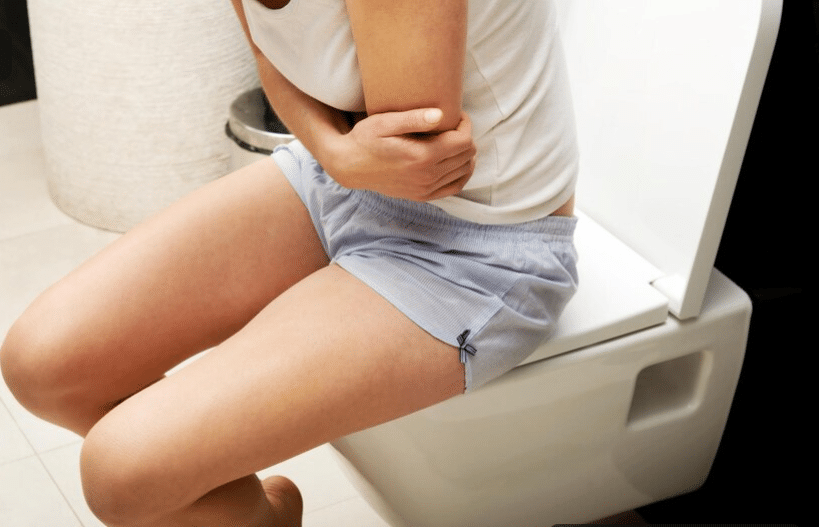Chronic constipation is more than just occasional discomfort; it’s a persistent condition characterized by infrequent bowel movements, difficulty passing stool, or a sense of incomplete evacuation. It can stem from factors like a low-fiber diet, dehydration, inactivity, stress, or medical conditions such as irritable bowel syndrome.
While it may seem minor, chronic constipation can have significant effects on overall health, particularly the pelvic floor. This group of muscles and tissues supports the bladder, bowel, and reproductive organs while maintaining control over urination and defecation. Persistent straining due to constipation places excessive pressure on these muscles, leading to complications like incontinence, pelvic pain, and sexual dysfunction in both men and women.
Addressing chronic constipation is crucial not just for immediate relief but to safeguard pelvic floor health and prevent long-term issues. Let’s delve into how constipation impacts the pelvic floor and explore steps to manage it effectively.
How Chronic Constipation Affects the Pelvic Floor
- Increased Pressure on the Pelvic Floor
- Chronic Straining: Constipation often forces individuals to strain during bowel movements, subjecting the pelvic floor muscles to repeated forceful contractions. Over time, this can weaken the muscles, increasing the risk of conditions such as urinary incontinence or pelvic organ prolapse, where organs like the bladder, uterus, or rectum descend from their normal position.
- Weakened Pelvic Floor Muscles: Prolonged straining causes the pelvic floor muscles to lose their strength and ability to contract effectively, leading to poor bladder and bowel control for both men and women.
- Pelvic Floor Dysfunction
- Incontinence: Weak pelvic floor muscles from chronic constipation can result in urinary or fecal incontinence, as these muscles are essential for maintaining control over the bladder and bowels.
- Pelvic Pain: Chronic constipation often leads to overstressed pelvic muscles, resulting in pain. In women, this may appear as vaginal or uterine pain, while men may experience discomfort in the prostate or perineum.
- Impact on Sexual Health
- For Women: Tight or overactive pelvic floor muscles caused by chronic constipation can lead to painful intercourse. This condition, often associated with pelvic floor spasms, makes it difficult for the muscles to relax properly.
- For Men: Chronic constipation can contribute to erectile dysfunction or painful erections due to the pelvic floor’s role in erectile function and ejaculation.
- Pelvic Organ Prolapse
- For Women: Straining increases intra-abdominal pressure, potentially causing pelvic organs like the bladder, uterus, or rectum to descend into the vaginal canal. Symptoms include heaviness in the pelvic area, urinary problems, and difficulty with bowel movements.
- For Men: Though rare, men can also experience pelvic organ prolapse, particularly after prostate surgery. Chronic constipation exacerbates this condition, placing additional strain on the pelvic floor.
- Dysfunctional Muscle Coordination
The pelvic floor and abdominal muscles work in close coordination to support bowel movements. Chronic constipation disrupts this relationship, causing ineffective bowel movements and further strain on the pelvic floor muscles.
Preventing and Managing Pelvic Floor Issues Due to Chronic Constipation
- Dietary Changes
A high-fiber diet combined with adequate fluid intake can prevent constipation, reducing the need for straining and easing pressure on the pelvic floor.
- Regular Exercise
Pelvic floor exercises, such as Kegels, help strengthen these muscles. Core exercises and regular physical activity also improve overall muscle function and alleviate constipation.
- Biofeedback and Physical Therapy
Seeing a physiotherapist who specializes in pelvic health can be highly beneficial. Biofeedback therapy teaches proper muscle coordination and relaxation techniques to retrain the pelvic floor.
- Avoiding Straining
Avoid prolonged straining during bowel movements. Using a footstool to elevate your feet while sitting on the toilet can improve posture and reduce the effort required for bowel movements.
- Medical Intervention
In some cases, medical treatment may be necessary, including stool softeners, laxatives, or surgical procedures, to address chronic constipation and its impact on pelvic floor health.
An insight from mamahood
Chronic constipation is more than a digestive issue—it can significantly weaken the pelvic floor, leading to incontinence, pain, and other complications. Addressing constipation through dietary changes, exercise, physical therapy, and, when needed, medical interventions is essential to protect the pelvic floor and prevent further issues. By taking steps to manage constipation effectively, individuals can improve their quality of life and safeguard their pelvic health. For personalized support with managing chronic constipation, protecting pelvic health, and improving overall well-being, reach out to Mamahood Health Advisors through live chat or private message. You can also explore Mamadoc, your AI doctor, for expert, tailored advice and guidance.








